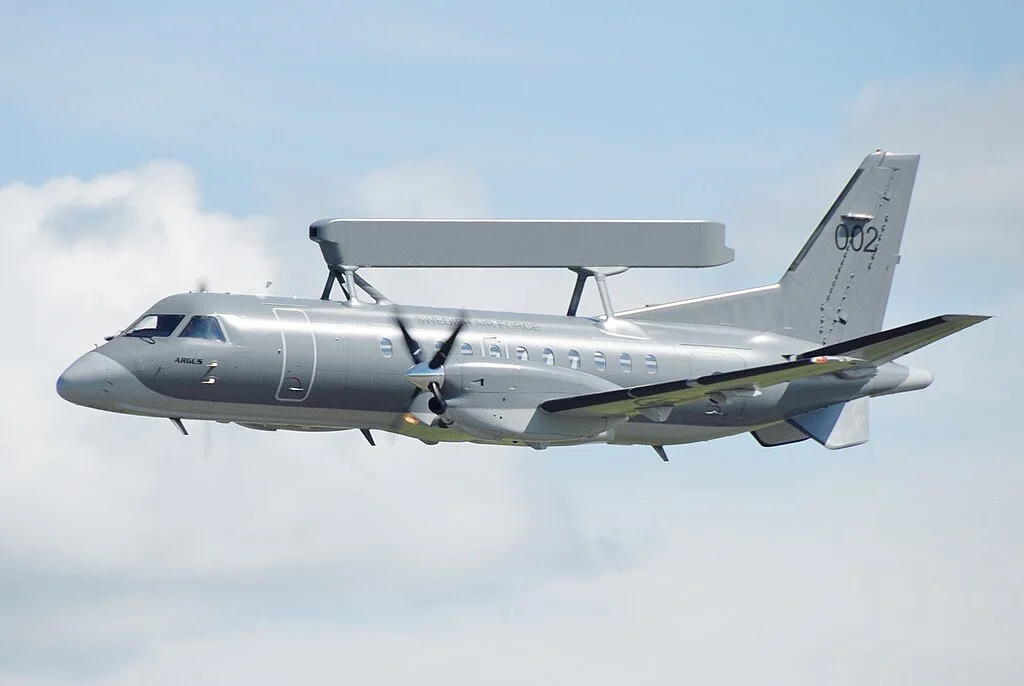Ukraine game changer, the SAAB 340 AEWCS.
After a very long wait, Ukraine is eventually getting modern equipment for its air force. But transitioning from Soviet-era fighter and doctrine to a network-centric air force running on chips and smart weapons cannot be done in a day.
Ukrainian short-term needs
One of the big upsets of this war is that the close air support and air interdiction missions have been completely taken over by a combination of drones and artillery.
On the other hand, Ukrainians have been begging for effective air defense since the beginning of the war, being on the receiving end of hundreds of missiles every week.
Guepard in action
Western forces have supplied a few very effective SAM systems. But they are only available in very small numbers.
NATO forces, being used to air dominance, retired the vast majority of their short-range air defense systems (SHORAD) and all of their radar-guided guns (SPAAG) 20 years ago.
The Germans refurbished dozens of retired Guepard systems, and they have already proven their worth by downing hundreds of targets with their twin 35mm radar guided guns.
The next step is to use their long-awaited F16 Viper, and maybe next year Mirage 2000-5 and even the Saab Gripen. Contrary to popular belief, despite their quality, these fighters, on their own, cannot have a significant impact in the short term due to the low number of pilots and aircraft available.
Ukrainian were eager to use the first batch of F16, but they quickly lost one downed by friendly fire. It was a stark reminder that trying to intercept incoming missiles is extremely hazardous when you are sharing the sky with hundreds of bullets and missiles, all converging toward the same target. They lost many old Mig 29s that way, but to lose a much more capable F16 and a very experienced pilot is a tragic waste.
Skol!
Saab AEWCS
This is why the transfer by the Swedish air force of two Saab 340 AEWCS(Airborne Early Warning and Control System) is probably one of the most important decisions of the year.
With their very powerful AESA radar, they will improve their situational awareness over Ukraine airspace, especially against low-flying aircraft at very long range (up to 300km).
This is likely to be the most important asset of the emerging Ukrainian Integrated Air Defense System (IADS). These platforms perform three functions; air surveillance, battle management, and weapons control, by merging on the same network; radars, ground-based defenses and all fighters in flight equipped with the Nato link-16.
The mission commander on board is there to coordinate the most effective defense using all the assets at his disposal.
These Awacs-controlled operations have been the cornerstone of any NATO-led operation for decades and are fantastic force multipliers.
While flying above Kiev they will improve the air defense significantly. But more importantly, it will enable the Ukranian fighters to ambush incoming Russian aircraft.
F-16 and Mirage will be able to fly at very low level with their radar turned off while having a god’s eye view of the sky in front of them thanks to the information received from the AEWCS. The objective is to get close enough to the strike aircraft, if possible undetected, and to fire a volley of guided missiles, leaving very little time for the Russian pilots to react.
The detection bubble is far greater when the radar is at 30,000 feet.
It requires perfect coordination, but this is precisely why these AEWCS have been built.
The importance of these 2 aircraft will not be missed by the Russian air force, equipped with many very long-range anti-AEWCS missiles and will make every effort to return the favor after losing 2 of their own precious AEWCS (Compass A-50) and their highly specialised crew earlier this year.
Properly used, with enough fighters and long-range surface-to-air missiles to support them, these 2 Saab AEWCS will certainly operate with tactics similar to how a carrier air group operates, meaning establishing temporary air superiority over the front line for air defense using ambush tactics with fighters and SAM traps or providing long range detection capabilities during offensive actions before retreating safely to their base as far away from the front as possible.



